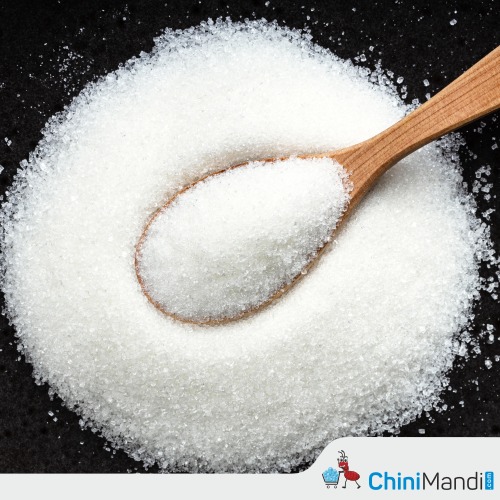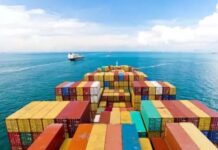For centuries, sugar was the cornerstone of the Cuban economy, not just as the island’s main export but also as the foundation of its rum industry. Older Cubans remember when the island’s economy was essentially built on the backs of several families, reported BBC.
Today, however, the farmers say that they have never seen the sugar industry as broken and depressed as it is now—not even when the Soviet Union’s lucrative sugar quotas dried up after the Cold War. Spiralling inflation, shortages of basic goods, and the decades-long US economic embargo have created a dire financial outlook in Cuba, particularly in the sugar trade.
“There are not enough trucks, and the fuel shortages mean sometimes several days pass before we can work,” says Miguel, waiting in a tiny patch of shade for the Soviet-era lorries to arrive. The lost hours of harvest, with men and machinery idle, have acutely hurt production levels. Last season, Cuba’s production fell to just 350,000 tonnes of raw sugar, an all-time low for the country, and well below the 1.3 million tonnes recorded in 2019.
Miguel is one of the fastest cutters in his team—recognized by his bosses as among the most efficient in the country. Yet he says he receives no financial incentive for greater production beyond his love of the trade. “My wages barely buy anything anymore,” he says, reflecting on the worsening inflation in the country. “But what can we do? Cuba needs the sugar.”
Indeed, Cuba now imports sugar to meet domestic demand—a far cry from the glory years when Cuban sugar was the envy of the Caribbean and exported around the world. Inside Ciudad Caracas, a 19th-century sugar mill near Cienfuegos, the air is thick with the overpowering smell of molasses. As obsolete, rusting cogs grind tonnes of sugarcane into pulp and juice, the workers tell me it is one of just two dozen working sugar mills in Cuba.
“That’s four more than originally planned for this season, thanks to the hard work and effort of the workers,” says Dionis Pérez, communications director of the state-run sugar company, Azcuba. “But the other 29 are at a standstill,” he acknowledges. “It’s a disaster. Today the sugar industry in Cuba almost doesn’t exist,” says Juan Triana of the Centre for Studies of the Cuban Economy in Havana.
The slump in sugar has serious implications for other parts of the Cuban economy, including its export earnings from rum. “We’re producing the same quantity of sugar Cuba produced in the middle of the 19th century,” Triana notes. The problems have been exacerbated by the “maximum pressure” policy implemented by former US President Donald Trump, which intensified the trade embargo on the island, a measure later extended by President Joe Biden.
However, the issues facing Cuban sugar are not solely due to the US embargo. Years of chronic mismanagement and underinvestment have also wrecked the once-thriving industry. Today, sugar receives less than 3% of state investment as the Cuban government backs tourism as its main economic driver instead.
One man who can still get his hands on enough sugar is Martin Nizarane, part of a new breed of Cuban private entrepreneurs. His company, Clamanta, produces yoghurt and ice cream in a factory outside Havana. As Mr Nizarane shows me sacks of sugar imported in bulk from Colombia, he says he hopes to double production soon.
The business has been hailed by Cuban President Miguel Díaz-Canel as a model for the future. To many, this praise amounts to a paradigm shift. While still considered a dirty word by the Cuban state, this is capitalism pure and simple, even if Martin Nizarane displays his revolutionary credentials with photographs of him hugging the late revolutionary leader, Fidel Castro, adorning his office.
I suggest that only people with close ties to the Cuban Communist Party can own a private business as sophisticated as his. He is quick to deny it. “I am not an employee of the Cuban state. This is a non-state form of production which sells to both other non-state entities and state-owned companies,” he retorts. “The state treats me like just another private entrepreneur with no special privileges whatsoever.”
Sugar’s demise is just one part of Cuba’s faltering economy. On March 1, amid growing inflation, the government imposed a five-fold price increase on subsidized fuel at the petrol pumps. Officials said it was a difficult but overdue decision, arguing the government could no longer afford such high subsidies on fuel.
As he queued to fill up his tank on the day the new prices came into force, Manuel Domínguez said he was not convinced. “There’s no relationship between what we earn and the prices we see—whether that’s fuel or food in the shops or anything else. There needs to be a correlation between our wages and what things cost because, right now, for the average Cuban, fuel is simply unaffordable.”
A few days later, economy and planning minister Alejandro Gil Fernández was arrested for alleged corruption. Some believe he has been made a scapegoat for the state of the Cuban economy. Regardless, it was an extraordinary—and very public—fall from grace. Most think it will take much more than one ministerial head to roll to pull Cuba from its economic woes.
Back in the sugarcane fields of Cienfuegos, the cutters carry out their gruelling work with little optimism. Inevitably, when discussing the sugar industry in Cuba, someone will quote the island’s famous refrain: “Without sugar, there’s no country.” For Cuban economist Juan Triana, that idea is being tested to its limit. A quintessential part of the national identity—part of the island’s very DNA—is being eroded before Cubans’ eyes. “For more than maybe 150 years, the industry of sugarcane was both the main export income and the locomotive for the rest of the economy. That’s what we’ve lost.”











